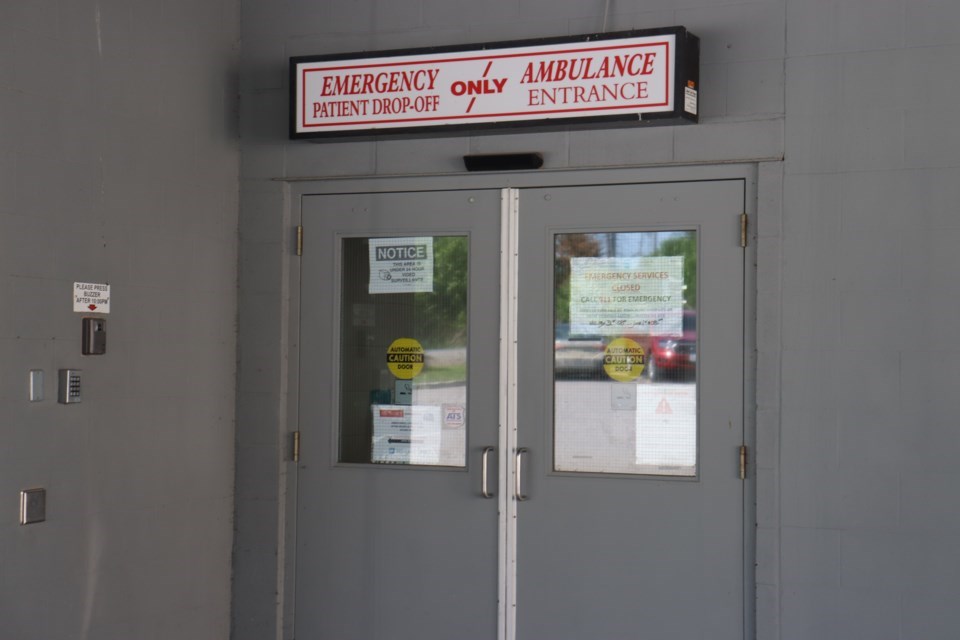EDITOR’S NOTE: A version of this article originally appeared on The Trillium, a new Village Media website devoted to covering provincial politics at Queen’s Park.
There have been more than 1,000 closures of hospital services in Ontario this year, totalling more than 31,000 hours of lost care, according to an advocacy group.
The Ontario Health Coalition, which advocates for public health care, tracked the closures of emergency departments, urgent care centres and other facilities through news reports and public statements from the hospitals.
They found 867 temporary emergency department closures and the permanent closure of the one in Minden, 316 urgent care centre closures, two outpatient laboratory closures, 11 obstetrics unit closures, one long-term labour and delivery unit closure and one partial ICU closure, mainly impacting small-town and rural Ontario.
The findings of the report, Unprecedented and Worsening: Ontario’s Local Hospital Closures 2023, include an example well-known to local readers: the repeated temporary closures of Thessalon's emergency department earlier this year.
"The emergency department at North Shore Health Network’s Thessalon site has closed three times this year so far due to physician shortages," the report states. "The closures took place from May 24-26 and all day on May 29 and May 31. In good weather with no road construction it is more than 40 minutes to the nearest hospital in Blind River and more than an hour to the hospital in Sault Ste. Marie."
Timothy Vine, the CEO of the North Shore Health Network, was a guest on Village Media's Inside the Village podcast when the closures were occurring.
Other highlights of the report include:
- the local emergency department in Chesley has been closing for evenings, overnight and on weekends since December 5, 2022;
- Clinton’s emergency department has been closed evenings and overnight since December 2019;
- the Town of Durham has had 51 emergency department closures in 2023 so far;
- Seaforth has had 17 temporary emergency department closures;
- Walkerton has had 20 emergency department closures;
- Wingham has had 31 emergency department closures;
- the Fort Erie and Port Colborne urgent care centres permanently closed for overnights on July 5;
- the Minden hospital’s emergency department permanently closed on June 1;
- and in Hearst, the labour and delivery unit has been closed for months.
"The immediate cause of the closures is staff shortages including nurse, health professional and physician shortages," the report says. "Staffing shortages that were emerging prior to the pandemic have grown over the last three years into the worst crisis anyone has seen."
The group blames the government's decision to expand procedures in private clinics, its wage restraint legislation known as Bill 124, and its decision not to act on the rapid expansion of for-profit health-care staffing agencies for the staffing shortages.
The health coalition held a press conference outside of Queen's Park Tuesday attended by politicians from the New Democratic, Liberal and Green parties.
"I'm going to be very clear, the Ford Conservative government just doesn't seem to care," said NDP Leader Marit Stiles. "They have seen our health care system as just another way to help their insider friends make a buck. And while they're funnelling those public dollars into private pockets, we cannot go back to a government that lays off nurses and slashes hospital budgets in this province. That is not what Ontario needs."
Adil Shamji, the Liberal health critic and an emergency physician in Toronto said the report doesn't capture "the full magnitude of the tragedy in our province."
"It doesn't capture the terror that a hospital feels when it can barely keep its emergency department alive. It doesn't capture the trauma that a family experiences when they call 911 and don't know whether someone's going to pick up, or when the ambulance is going to come," he said.
That was echoed by Green Leader Mike Schreiner.
"Imagine a young family going to hospital for the birth of their child in the labour and delivery unit is closed," Schreiner said. "Imagine someone taking their elderly parent to an emergency department where every second matters and it's closed, and they have to drive miles away putting their loved one's life at risk."
In a statement, a spokesperson for Health Minister Sylvia Jones touted the government's $80 billion in health care spending this year, including a four per cent increase to the hospital sector.
"This year alone we have added 15,000 new nurses and 2,400 new physicians to the healthcare workforce through changes our government has made to break down barriers for internationally and interprovincially educated health care workers, expanding the learn and stay grant and launching the largest medical school expansion in over 15 years. While investing $44 million to help emergency departments stay open, this investment includes smaller and rural hospitals for the first time," said Hannah Jensen.
"Our government also further extended the Temporary Locum Program this fall, which provides urgent locum coverage to rural and local hospitals. Since we initially extended this program going into the summer, all hospitals in need of physician coverage and all northern hospitals stayed open throughout the summer.”
On Wednesday, Ontario's auditor general is expected to release an audit of the province's emergency departments in the office's annual reports.
